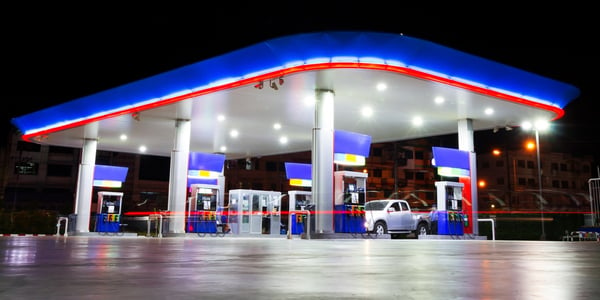External lighting brings accessibility and safety to the exterior of buildings, but the best results are obtained when the right type of luminaire is used in each application. Also consider that outdoor lighting is typically used from sunset to sunrise, and this presents an excellent opportunity to save energy with LED bulbs and fixtures.
This article provides an overview of the main types of lighting fixtures used outdoors, along with some recommendations for improving performance and energy efficiency. Outdoor lighting fixtures are generally classified based on their physical construction:
- marquee
- Spotlight
- Linear
- Pole mounted
- Wall Pack
Get a high-performance outdoor lighting design.
General Recommendations
All types of luminaires listed above are available in LED versions, which are strongly recommended for their energy efficiency and long lifespan.
|
Compared to… |
LED lighting saves… |
Although it lasts… |
|
HID lighting |
More than 60% of energy consumption |
5 to 10 times more |
|
Fluorescent lighting |
More than 30% of energy consumption |
2 to 5 times more |
When upgrading to LED lighting there are three main options:
- Replacement bulbs, which use the same sockets and ballasts.
- Retrofit kits, which use the same accessory when rewiring or replacing internal components.
- Integral LED luminaires, where the existing luminaire is completely replaced.
Governments and utility companies often run rebate programs to help building owners cover the costs of these upgrades, but there are minimum requirements for equipment to be eligible. Typically, the should be labeled according to POWER STAR DesignLights Consortium or other similar programs.
Canopy Lighting
As the name suggests, roof lights are designed for installation on the underside of external roofs. These fixtures are typically rated for humid locations considering they will be installed outdoors. They must also be vibration resistant as they are often used in high traffic areas.

Canopy lights are commonly found in gas stations, drive-through banks, drive-through restaurants, covered parking spaces, and other similar applications. It is important to choose a luminaire with the ideal beam shape, taking into account the height and mounting area.
flood lights
The projectors have an adjustable base, allowing their beam to be projected onto an object of interest or specific architectural features. They are also common in outdoor sports, allowing maximum visibility of the field at night. In industrial environments, projectors are very useful in outdoor areas where machines or containers are constantly moving.

Floodlights are characterized by their powerful lighting output. The beam shape is typically wide to allow coverage of a large area, although focused beam versions exist for use in concerts or similar applications.
Linear Lighting
These luminaires are characterized by their narrow and elongated construction, as their name suggests. Linear luminaires are commonly used in multi-story parking areas and come with an airtight construction that protects them from moisture, dust, and insects. They also share some applications with canopy lighting.

Fluorescent versions of these luminaires use ballast-driven tube lamps. LED versions may use tube-shaped LED bulbs , designed to fit into the same bases as fluorescent bulbs. However, some linear LED fixtures are integral; Instead of tubes, they have a light mechanism with an array of optimally spaced LEDs.
Pole Mounted Lighting
These luminaires also have a self-explanatory name and are most commonly used on streets and open parking lots. Depending on where you live, for example, if you have a monthly parking lot Boston If you allow, you have already encountered pole mounted lighting because these fixtures are practically in every parking area.
These fixtures must cover a large area beneath them, so they are typically designed with a very wide beam. However, it is also important to avoid lateral projection of light – this can cause glare for neighbors and motorists and is especially dangerous for motorists.

Pole-mounted lights come with a BUG rating, which, by the way, has nothing to do with bugs. Instead, it indicates the amount of backlight (B), uplight (U), and brightness (G) produced by the device. The best possible classification is B0 U0 G0, where almost all output is projected in the intended direction, while the worst is B5 U5 G5.
Wall Packages
Wallpacks are free-standing luminaires designed for direct installation on walls without a pole. Based on beam shape, wallpacks can be classified into two main types : EMI-cut wallpacks project part of their lighting output sideways, while full-cut wallpacks focus their lighting output into a narrow, downward-facing beam. .

Wallpacks are typically used to illuminate the immediate area around a building. When lighting is required for large spaces not adjacent to walls, pole-mounted luminaires are used.
Conclusion
There are many types of outdoor lighting fixtures, each intended for different applications. Furthermore, there are variations of each type of accessory. By working with qualified design professionals, you can ensure your outdoor spaces have great lighting coverage at the lowest possible energy cost. LED lighting upgrades are among the energy efficiency measures with the shortest payback period in most cases.

